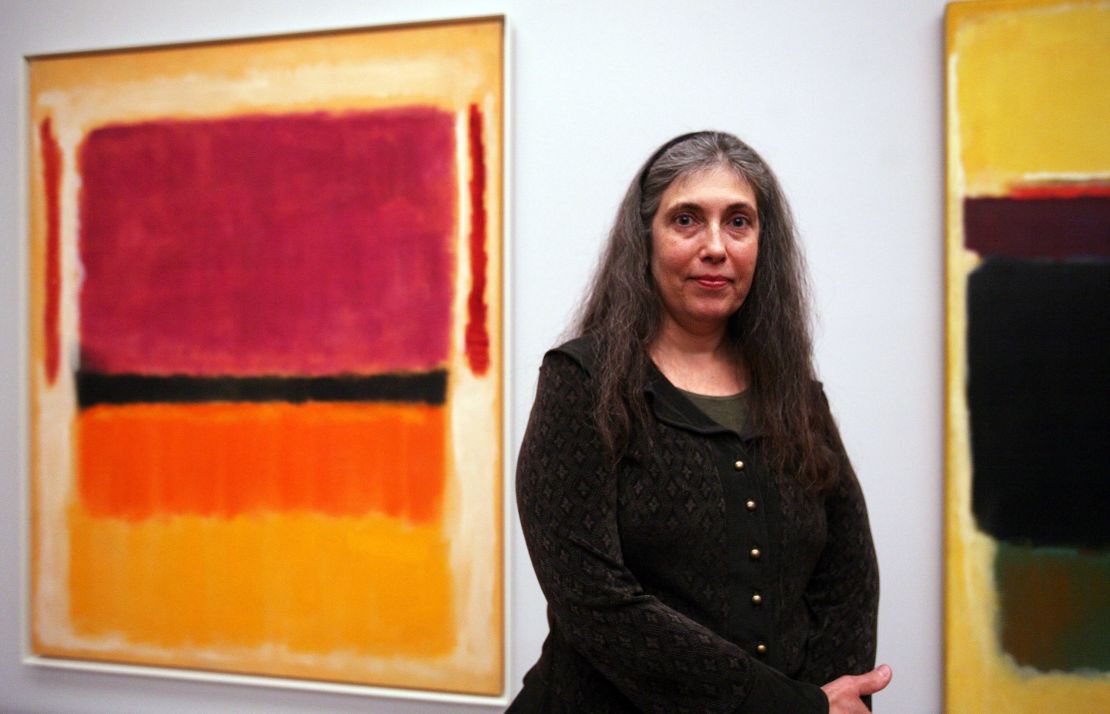Not many people know that Pablo Picasso created more than 45,000 pieces of art. What even fewer people realize is that following his death in 1973, it took six years – and $30 million – to settle matters between seven heirs and deal with his legacy.
When an established artist dies, what happens to the art? Family squabbles and long legal battles, often spanning decades, can paint a picture of greed that puts soap operas to shame.
“When there’s a large sum of money to be made and a large number of people involved, it becomes a real problem,” said Conor Macklin, director of the Grosvenor Gallery in London, at a panel talk at the Art Dubai Modern Symposium last weekend. “It’s become increasingly important for galleries to work with estates to advise and secure the legacy.”
In 2015, celebrated American painter Mark Rothko’s painting “No. 10” sold for an eyebrow-raising $82 million at a Christie’s auction in New York.
The sale renewed interest in the mess that followed Rothko’s death in 1970. In 1976, his daughter, Kate, sued Frank Lloyd, Marlborough Fine Art and the three executors of her father’s estate for fraud. She claimed that the executors sold a substantial part of the artist’s estate to the Marlborough Gallery in New York at undervalued prices as part of “a plan and conspiracy to defraud the estate,” according to a New York Times report at the time. Kate won the case, though she lost access to key paintings.

In 2000, the gallery was under the microscope again for alleged misdealings with prominent British painter Francis Bacon’s multimillion-dollar estate.
John Edwards, Bacon’s longtime companion and sole heir, sued the gallery, accusing them of intentionally undervaluing Bacon’s art when they bought them from the artist, and then reselling them at much higher prices, among other claims. Marlborough strongly denied any wrongdoing, and the estate dropped the claims in 2002.
“Prominent artists from the 1940s and ’50s have passed away and left these large, rich estates that need to be properly managed for the first time,” explains Loretta Würtenberger, a lawyer and founder of The Institute for Artists’ Estates in Berlin, Germany. “Typically, when an artist dies, existing contractual agreements with galleries cease, so that’s when everyone begins to fight for a better position.”
‘Like a crime scene investigation’
Another common issue is that, after an artist’s death, fake art becomes difficult to track. This is the case with Paul Guiragossian, who died in 1993.
A prominent Armenian-Lebanese artist, his work graced the cover of the inaugural catalog of Christie’s Middle East in 2006. His children created the Paul Guiragossian Foundation in 2011 to authenticate and archive the prolific artist’s work.
“Suddenly, people were coming to show us paintings they bought that were clearly fake, it was starting to get on my nerves,” said his daughter Manuella Guiragossian, who serves as president of the foundation and is also a painter.
“I teamed up with a copyright lawyer, and lately our work at the foundation has been like a crime scene investigation: enlarging images, tracing paintings, finding dates.”
Art auctions: A look at the top record breakers
Family doesn’t always see eye to eye, however. Shirin Partovi, founder of Shirin Art Gallery in Tehran and New York, found that she had to give up working with some difficult families.
“I really wanted to work with the family of an Iranian artist who died in 1972, but the siblings wouldn’t communicate, kept the stronger pieces off limits, and I didn’t know who to sign a contract with,” she said during the panel discussion at Art Dubai. “I couldn’t represent him because too many heirs wanted a piece. It’s a shame as really the artist’s legacy suffers in the end.”
Another key issue for estates is archiving material. Galleries will often work with estates to build an artist’s catalogue raisonné, a comprehensive list of every work completed by an artist.
“A catalogue raisonné serves as an important way to establish authenticity, especially for artists prominent in the secondary market,” said Macklin of Grosvenor Gallery. “We spend a lot of our time contacting auction houses saying that works they’ve got are incorrect. We could spend every day taking down fakes from different sites.”
He gives the example of a master forger who mimicked the style of popular Indian artist Francis Newton Souza, among others. In 2012, the forger was ultimately fined £100,000 ($124,160) and jailed for five years, but this was with the help of Scotland Yard’s Fine Art division.
Europe also has strict reselling laws, where an estate receives 4% of a work of art that is resold, according to Macklin. This kind of structure, backed by legal support, is not common elsewhere in the world.
“If a car gets stolen, police here will pursue the thieves, but a painting worth much more, nobody knows how to find it,” said Guiragossian, who is based in Beirut, Lebanon. “During the Civil War in Lebanon, my father’s artist studio was forced to move so many times. During an hour or two of ceasefire, we would put everything we could gather in a box … Now, we’re properly sorting, numbering, hoping we didn’t lose anything. It’s a giant task.”
Guiragossian says her father didn’t want to work exclusively with a gallery during his lifetime, and the foundation follows the same open philosophy.
Würtenberger says it is common that estates of contemporary artists would choose to switch from one mega gallery to two or three for stronger geographical representation.
“That way, they work as a team and not competitively,” she says. “From estate perspective, it’s about creating a situation where the artist’s legacy is best honored.”

















